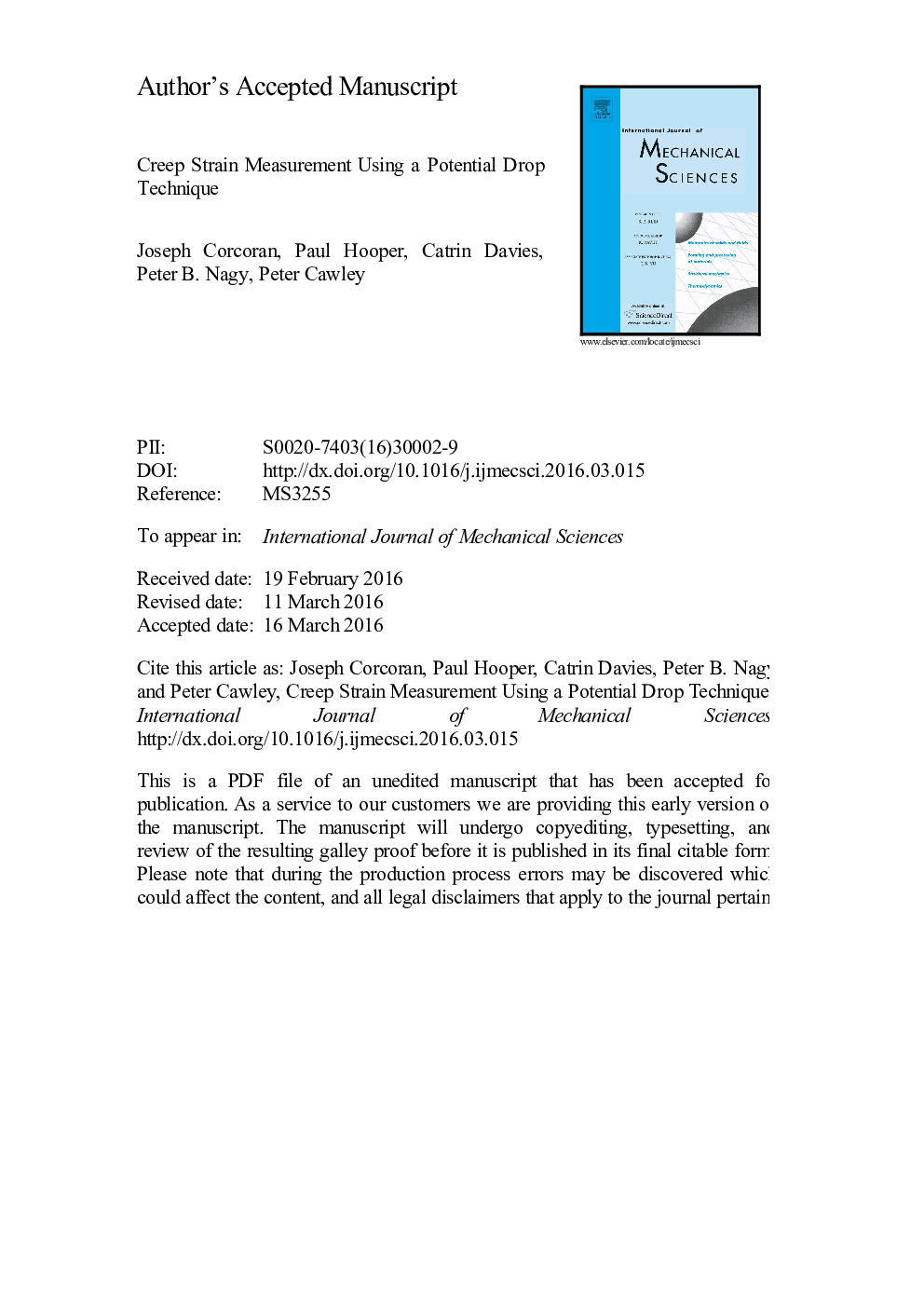| Article ID | Journal | Published Year | Pages | File Type |
|---|---|---|---|---|
| 7174141 | International Journal of Mechanical Sciences | 2016 | 29 Pages |
Abstract
This paper will demonstrate the use of a potential drop sensor to monitor strain. In particular, the suitability of the technique to high temperature or harsh environment applications presents an opportunity for monitoring strain in components operating under creep conditions. Monitoring creep damage in power station components is a long standing technological challenge to the non-destructive evaluation community. It is well established in the literature that strain rate serves as an excellent indicator of the progress of creep damage and can be used for remnant life calculations. To facilitate the use of such strain rate based evaluation methods, a permanently installed, strain sensitive, potential drop technique has been developed. The technique has very simple and robust hardware lending itself to use at high temperatures or in harsh environments. Strain inversions are presented and demonstrated experimentally; a room temperature, plastic deformation experiment is used for validation and additionally an accelerated creep test demonstrates operation at high temperature (600 °C+). Excellent agreement is shown between potential drop inverted strain and control measurements.
Keywords
Related Topics
Physical Sciences and Engineering
Engineering
Mechanical Engineering
Authors
Joseph Corcoran, Paul Hooper, Catrin Davies, Peter B. Nagy, Peter Cawley,
